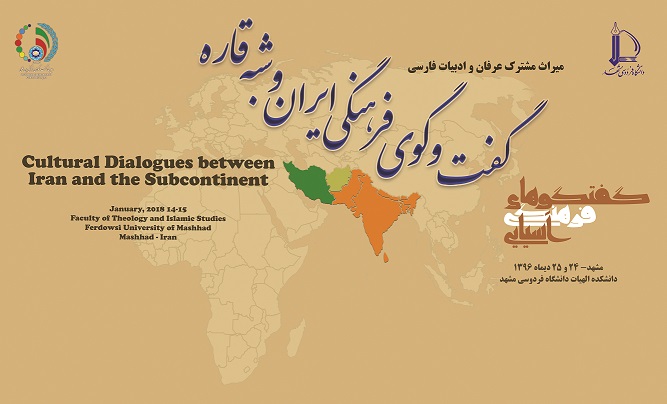The International Conference on Cultural Dialogues between Iran and the Subcontinent Held at Ferdowsi University of Mashhad ( Archive )
The International Conference on Cultural Dialogues between Iran and the Subcontinent was held on 14 and 15 January 2018 at Ferdowsi University of Mashhad. The main topic of the conference was the mutual heritage of Persian theosophy and literature and scholars from Pakistan, Sri Lanka, Afghanistan, Bangladesh, India
Dr. Mohammad Kafi, the President of
Dr. Mo’tamedi, the Cultural Director of Ferdowsi University of Mashhad and the scientific secretary of this conference also pointed to the high-quality articles received by the secretary of the conference and reiterated, “a total of 27 research articles by Iranian and non-Iranian scholars have been accepted by the scientific board of the conference and these articles would be discussed in 6 specialized panels”. Speaking of the long history of the region, Dr. Mo’tamedi mentioned ‘historical and cultural commonalities’ as the key factor of relations between the nations in the region and argued that ‘despite some false claims, the emergence of Islam has promoted the existing relations between nations’.
On the sidelines of the International Conference of Cultural Dialogues between Iran and the Subcontinent, notable scholars from India and Sri Lanka participated in exclusive interviews with the representative of the Public Relations Office at
1. Dr. Saiyid Zaheer Husain Jafri: Professor of History at the University of Delhi, India.
Q: Please give us a brief overview of the interactions and Cultural ties between Iran and the subcontinent.
A: In the past 30 years, I have been teaching courses on mysticism and wisdom at the University of Delhi. At this conference, I would present an article on immigration issues. More specifically, I would discuss how immigrant Persians, especially the Sufis, migrated to India and how, through these migrations,
2. Dr. Anupa Pande: Professor and Head of the Department of History of Art, Director and Pro Vice-Chancellor of National Museum Institute, New Delhi, India.
Q: Please tell us what gives Iran and India some cultural and artistic ties in their relationships?
A: My topic concerns the artistic dialogue between Iran and India: The Iranian inspiration and the Indian implementation, the concept of “Chaharbagh”. In the past, Iran has been a great influence and inspiration for India in many aspects, including painting and other forms of art. The concept of “Chaharbagh” has an Islamic origin and it first appeared in Persia. With the emergence of Islam, in the beginning, there was just the concept of “four gardens”. It was a place for travelers to take a rest in the desert after days of
3. Dr. W. A. Abeysinghe: Chairman of National Library, Sri Lanka.
Q: Do you see any notable Iranian influences over the Sri Lankan Culture?
A: I can't really see any notable and significant influences, but there are in fact good relations between Iran and Sri Lanka. In our national library, we have a corner especially devoted to Persian books.
Reporter and Interviewer: Fereshteh Mohammadzadeh

News File

